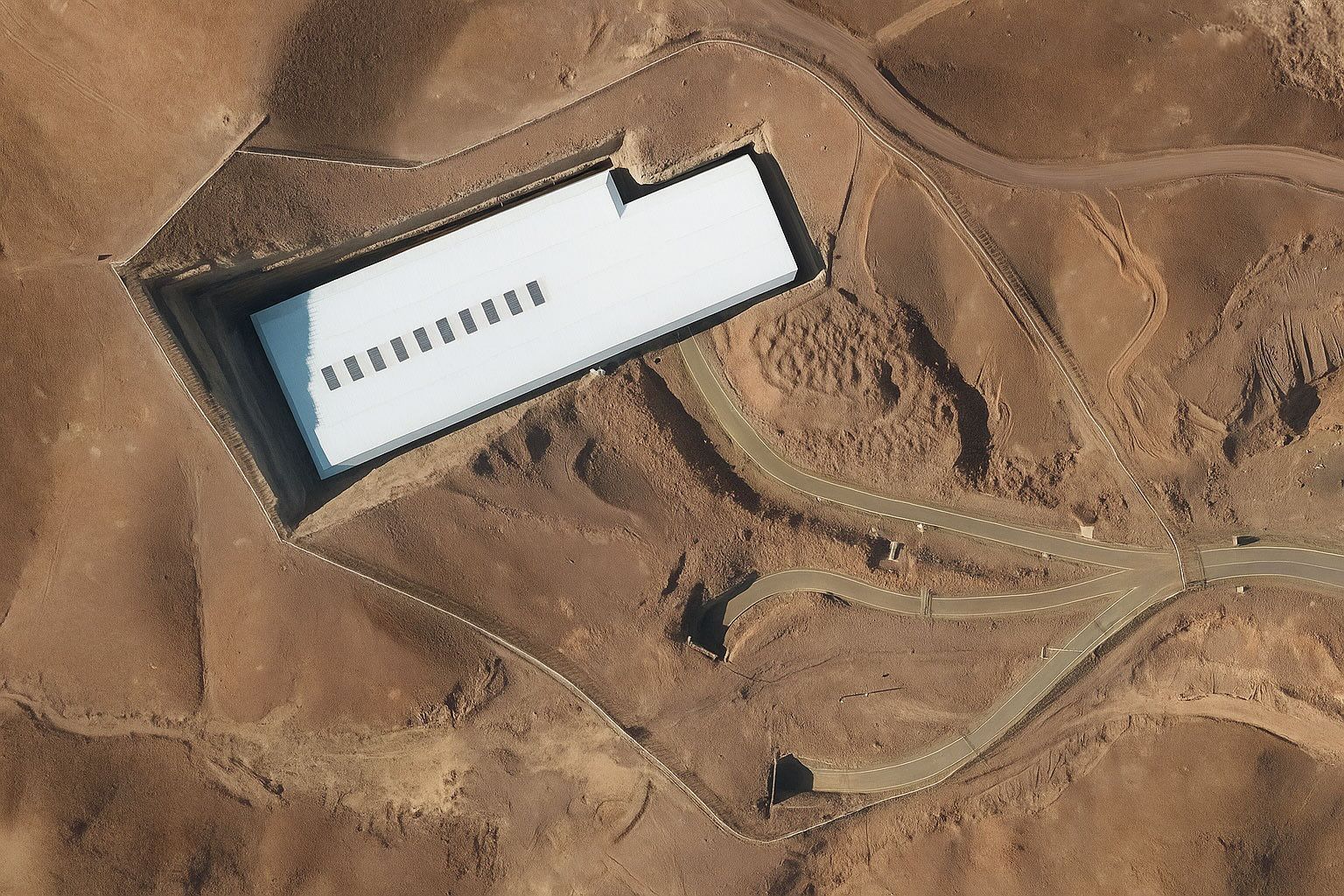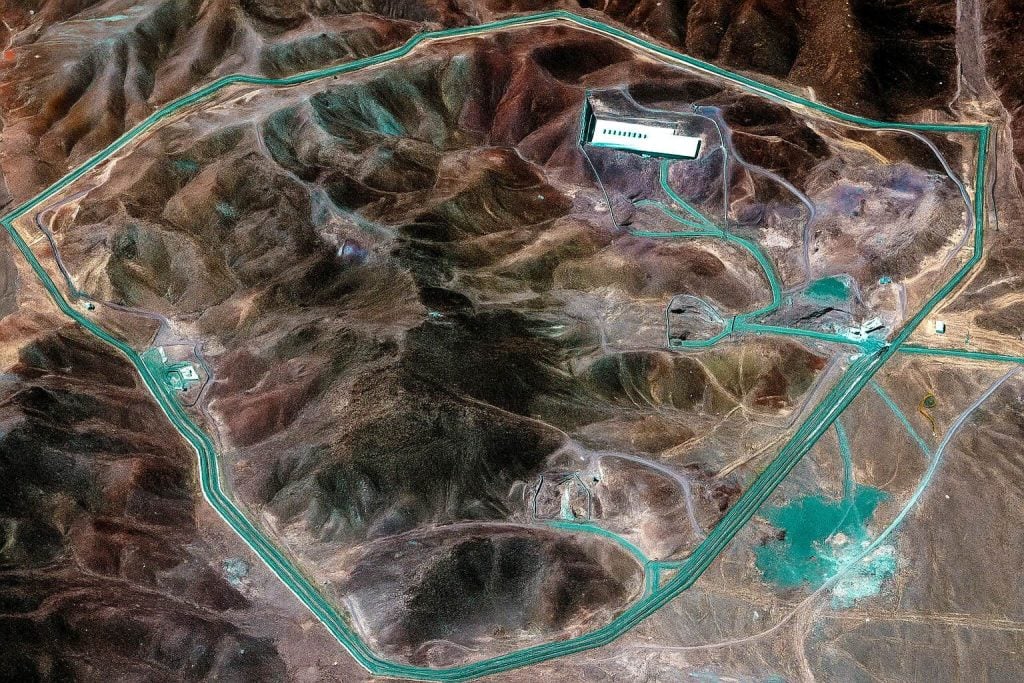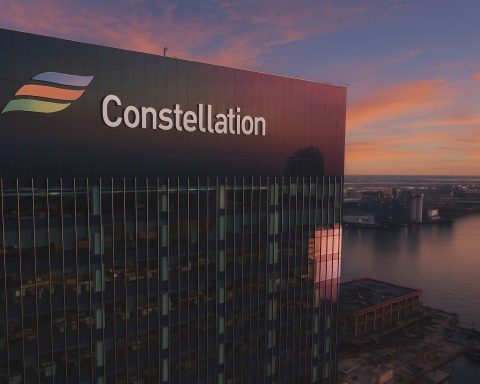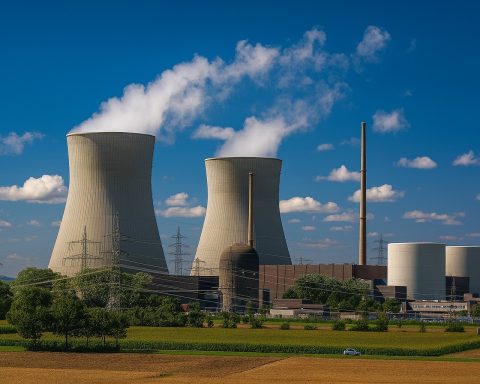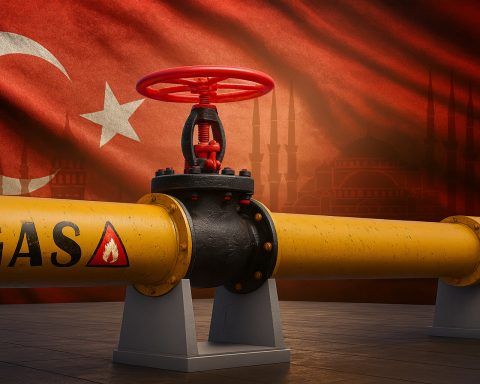- Fordo, officially Shahid Ali-Mohammadi Nuclear Facility, sits about 30 km northeast of Qom, Iran, built into a mountain on an IRGC base and buried 80–90 meters underground.
- Western intelligence uncovered Fordo, and Iran formally notified the IAEA on 21 September 2009, shortly after the United States, the United Kingdom and France publicly revealed knowledge of the site.
- Before the JCPOA, Fordo housed about 2,700 IR-1 centrifuges; after JCPOA, by January 2017 the IAEA verified only 1,044 IR-1 machines remained in one wing.
- Construction began around 2006–2007, and by September 2009 inspectors confirmed tunnels and halls but said no centrifuges or nuclear material had been installed yet.
- From 2011 to 2013 Fordo produced uranium enriched to about 20% U-235 for Iran’s Tehran research reactor.
- Under the 2015 JCPOA, Iran agreed to stop all uranium enrichment at Fordo for 15 years and convert the site into a nuclear physics and technology center while retaining 1,044 IR-1 centrifuges.
- Beginning in 2019–2021, Fordo installed advanced IR-6 cascades, and by 2021 had enriched uranium to 60% U-235.
- In January 2023 an unannounced IAEA inspection found two interconnected IR-6 halls at Fordo producing about 60% enrichment, and in March 2023 uranium particles enriched to 83.7% U-235 were detected.
- Fordo relies on deep underground design and thick concrete barriers, with a Russian S-300 air-defense battery installed above in 2016.
- On 22 June 2025, six GBU-57 bunker-buster bombs and about 30 Tomahawk missiles were used in strikes on Fordo, Natanz and Isfahan; the IAEA reported no off-site radiation and no confirmed damage at Fordo.
The Fordo (often spelled Fordow) Fuel Enrichment Plant – officially the Shahid Ali-Mohammadi Nuclear Facility – is a deeply buried uranium enrichment site about 30 km northeast of Qom, Iran [1] [2]. It was built under a mountain on an IRGC military base and kept hidden for years [3]. Western intelligence eventually discovered Fordo and in late September 2009 Iran abruptly notified the IAEA of its existence, just after the US, UK and France publicly revealed that they had known about it [4] [5]. Over the next decade Fordo became a focal point of Iran’s nuclear program – initially enriched to 20%, later (after 2018) to 60%, and even clandestinely to nearly weapons-grade (≈84%) – sparking international scrutiny.
UPDATE 27 June 2025 – What’s Happening at Fordo Right Now
In the ten days since the first Israeli bombs fell, the Fordo Fuel Enrichment Plant has become the geopolitical epicentre of the Israel‑Iran‑US confrontation. Below is a roundup of all verifiable reporting through the morning of 27 June 2025. Key take‑aways: Fordo was hit by U.S. bunker‑buster bombs on 22 June, but satellite, IAEA and Iranian accounts agree the underground halls survived; Israel is still pressing Washington for a second strike; the IAEA sees no off‑site radiation; and diplomatic efforts remain stalled as both Tehran and Jerusalem escalate retaliatory fire.
1. How and when Fordo was attacked
| Date | Event | Sources |
|---|---|---|
| 22 Jun 2025 02:15 UTC | Three U.S. B‑2 bombers dropped six GBU‑57 “bunker‑busters” plus ~30 Tomahawks on Fordo, Natanz and Isfahan. President Trump called the raid “totally obliterated” the sites. | [6] [7] [8] |
| 22 Jun (day) | Iranian state media said Fordo had been “long evacuated”; local crisis HQ reported “no danger to the people of Qom”. | [9] |
| 23 Jun | IAEA mobile sensors confirmed “no increase in off‑site radiation” near Fordo or Natanz. | [10] |
“No damage was seen at Iran’s Fordow Fuel Enrichment Plant,” the IAEA told reporters on 14 June after examining post‑strike imagery, reiterating the finding on 23 June. [11]
Why Fordo survived
Sky News notes that only the 30‑ton GBU‑57 can penetrate the 80‑metre mountain; six were dropped, “but it is still unclear if they made it to the centrifuge halls.” [12] U.S. officials privately admit “some doubt about full structural kill,” according to Reuters. [13]
2. Current military posture (25‑27 June)
- Israel pushes for a follow‑on hit. Senior Israeli officials told the White House they “will not wait two weeks” and may act alone if Washington hesitates. [14]
- U.S. bombers redeployed. Two additional B‑2s arrived on Guam on 26 June in case a second Fordo mission is ordered. [15]
- Iranian counter‑fire. Iran launched 27 medium‑range missiles at Israeli cities on 24‑25 June; Iron Dome intercepted most, but 20 injuries were reported. [16]
- Second Israeli wave. Overnight 26 June Israeli jets struck centrifuge workshops at Isfahan and western Iran—not Fordo—while threatening “more to come.” [17]
3. IAEA & technical status
- Cameras repaired, seals intact. Inspectors re‑entered Fordo on 25 June; all tamper‑indicating devices “remained functional,” per a confidential note leaked to Arms Control Assoc. [18]
- Material removed. Iranian technicians had siphoned most 60 % UF₆ to Natanz one week before the strike, The Guardian live blog revealed. [19]
- Centrifuge losses unknown. A preliminary IAEA video briefing to the UNSC (20 June) said blast over‑pressure may have warped cascade piping but “no hall penetration is yet confirmed.” [20]
4. Diplomacy & escalation calculus
- UN Security Council emergency session (24 June) produced no resolution; Russia and China blocked a U.S.–EU draft condemning Iran’s missile retaliation. [21]
- EU shuttle talks in Geneva collapsed 26 June; Politico reports Europeans urging Israel to pause strikes “for at least 96 hours” while talks resume. [22]
- Iran’s red line. Foreign Minister Araghchi warns the U.S. attacks will have “everlasting consequences” and reserves “all options” to respond. [23]
- Israeli rhetoric. “Fordo is the crown jewel; it must be neutralised,” a senior Israeli source told The Times of Israel, signalling readiness for a solo operation. [24]
5. Media & expert snapshots
“Bunker‑buster bombs were dropped on the heavily‑protected enrichment site,” Sky News summarised. [25]
“Fordo is gone,” screamed a Sky News headline after the strike, though later caveats noted damage was still being assessed. [26]
The New York Post assures readers the raid “won’t spark a Chernobyl”—because enrichment plants lack highly‑radioactive fuel. [27]
Turkey Today relayed the IAEA’s finding: “no radiation leak” detected at Fordo. [28]
ABC Australia’s explainer calls Fordo “the bunker that drew the U.S. into war.” [29]
Analysts at the Bulletin of the Atomic Scientists warn that even undamaged, Fordo’s high‑level stockpile poses long‑term proliferation risks. [30]
6. What to watch next
- Second‑strike window: Israel’s political‑military clock points to early July if the U.S. demurs.
- IAEA on‑site imagery: a full damage report is expected at the Board of Governors’ 30 June meeting.
- Missile tit‑for‑tat: each Israeli hit provokes larger Iranian salvos; civilian risk is rising rapidly.
- Gulf radiation monitors: so far clean, but any hall breach could change that overnight.
History and Discovery
Construction of the Fordo plant began in the mid-2000s. Iran claims work started in late 2007, but satellite imagery and analysis suggest construction of its tunnel entrances began as early as 2002–2005, with major build-out around 2006–2007 [31]. By late 2009 the underground complex (two long halls connected to tunnels) was largely complete. On Sept 21, 2009 Iran formally declared Fordo to the IAEA, shortly after US/UK/France revealed the site’s existence [32] [33]. During an IAEA “design information verification” visit in October 2009, inspectors confirmed the mountain halls and utilities were in place, but Iran stated that “no centrifuges or nuclear material had been introduced” yet [34]. Iran told the IAEA the plant was designed for about 3,000 IR-1 centrifuges, with operations slated for 2011 [35]. (In fact, Iran installed some cascades sooner.)
The revelation of Fordo immediately strained international trust. The IAEA Director noted that Fordo’s secrecy “reduces the level of confidence” in Iran’s nuclear declarations and “gives rise to questions” about other undeclared sites [36]. Western leaders argued Fordo violated Iran’s safeguards obligations [37], and UN sanctions (e.g. Resolution 1929 in 2010) specifically barred any enrichment outside declared facilities. Iran countered that Fordo was meant as a civilian reserve if Natanz were bombed, but the IAEA pointed out that such a scenario would be used for weapons-grade production rather than light-water reactor fuel [38].
By 2011–2012, Fordo began enrichment activity. In September 2011 the IAEA reported Iran had installed centrifuges at Fordo with the goal of producing uranium enriched to 20% U-235 [39]. Starting in December 2011, Fordo ran multiple IR-1 cascades and tripled its 20% output by March 2012 as more machines operated simultaneously [40] [41]. This 20%-enriched uranium was intended for Iran’s research reactor. By early 2013 Iran had accumulated hundreds of kilograms of 20% uranium at Fordo.
In November 2013, ahead of the 2015 nuclear deal, Iran agreed (in the Joint Plan of Action) to halt enrichment above 5% at Fordo. Under the 2015 JCPOA, Iran committed to stop all uranium enrichment at Fordo for 15 years, convert it into a “nuclear, physics and technology centre,” and remove all but 1,044 of its IR-1 centrifuges [42] [43]. By January 2017 the IAEA verified that over 1,600 excess centrifuges had indeed been transferred out of Fordo to Natanz [44] [45], leaving Fordo inactive for enrichment.
After the 2018 US withdrawal from the JCPOA, Iran gradually resumed Fordo operations. By 2019 Iran reported installing cascades of advanced IR-6 centrifuges at Fordo [46]. In late 2021 it began enriching uranium to 60% U-235 using those IR-6 cascades [47] [48]. In January 2023 an unannounced IAEA inspection discovered that Iran had secretly linked two of Fordo’s IR-6 cascade halls to produce 60% enrichment, a design change Iran had not declared [49] [50]. In March 2023 the IAEA then reported detecting uranium particles at Fordo enriched to 83.7% U-235 [51] [52] – just shy of weapons-grade. Iran denied any diversion, but the episode confirmed that Fordo had been used to pursue near–weapon-grade enrichment. <Table>
| Year | Event |
|---|---|
| 2002–2005 | Earliest Fordo tunnel portals appear in satellite imagery [53]. |
| 2006–2007 | Construction begins on Fordo’s underground enrichment halls (Iran says 2007; IAEA analysis suggests 2006) [54] [55]. |
| Sept 21, 2009 | Iran officially notifies the IAEA of the Fordo site, after US/UK/France publicly reveal knowledge of the secret plant [56] [57]. |
| Oct 2009 | IAEA inspects Fordo: confirms tunnels and halls built, but “no centrifuges or nuclear material” installed [58]. Iran says operational by 2011. |
| Sept 2011 | IAEA reports Iran has installed centrifuges at Fordo aiming for up to 20% enrichment [59]. |
| Dec 2011 – Mar 2012 | Fordo begins producing uranium enriched to ~20%; by March 2012 production triples as four cascades run simultaneously [60] [61]. |
| Nov 2013 | Iran agrees (Joint Plan of Action) to freeze enrichment above 5% at Fordo for 6 months. |
| Oct 2015 | JCPOA enacted: Iran must cease all enrichment at Fordo and convert it to a research center [62]. Allowed to keep 1,044 IR-1 centrifuges in one wing [63] [64]. |
| Jan 2017 | IAEA verifies Iran has completed Fordo’s conversion and removed excess centrifuges [65]. |
| 2018 | U.S. quits JCPOA; Iran begins rolling back nuclear constraints. Fordo is empty until 2019. |
| 2019 | Iran installs advanced IR-6 centrifuges at Fordo [66]. |
| Late 2021 | Fordo’s IR-6 cascades begin enriching to 60% U-235 [67] [68]. |
| Jan 2023 | Unannounced IAEA inspection finds Fordo’s interconnected IR-6 cascades producing ~60% enrichment [69] [70]. |
| Mar 2023 | IAEA detects uranium particles at Fordo enriched to ~83.7% U-235 [71] [72], a major safeguards breach. |
| June 2025 | During regional conflict, Israel and US strike Iranian sites. The IAEA reports no damage seen at Fordo [73] [74] despite claims of targeting. |
Location and Physical Characteristics
The Fordo facility sits about 30 km northeast of Qom (≈120 miles south of Tehran) on an IRGC missile base [75] [76]. The enrichment halls are carved into limestone about 80–90 meters below ground [77]【34†】. Satellite imagery (see above) shows multiple camouflaged tunnel entrances and armored support buildings on the mountainside. Deep underground placement and thick concrete barriers make Fordo extremely blast-resistant. Iran even deployed a Russian S-300 surface-to-air missile battery to defend the site in 2016 [78]. The mountain cover gives Fordo far more protection from air strikes than Iran’s Natanz site [79].
Technical Capabilities
Fordo is a pilot-scale enrichment plant (much smaller than Natanz) with specialized design:
- Centrifuge capacity: 2,976 IR-1 machines (two halls of 8 cascades each, roughly 185 centrifuges per cascade) [80] [81]. Before the JCPOA, Iran had installed about 2,700 centrifuges there [82]. After 2015, only 1,044 IR-1 machines remained in one wing (the rest were removed to Natanz) [83] [84].
- Centrifuge models: Initially IR-1 (the first-generation Iranian centrifuge) were used [85]. In 2019–2021 Iran began installing advanced IR-6 cascades at Fordo [86] [87], greatly increasing its enrichment speed.
- Enrichment levels: Under Iran’s declarations, Fordo was to enrich up to 5% U-235 (standard reactor fuel). In 2011 it shifted to 20% enrichment for research reactor fuel [88]. From 2021 onward, Fordo has enriched up to 60% U-235 [89] [90]. In 2023 IAEA swabs even found particles enriched to 83.7% at Fordo [91] [92], implying short-term experiments with near-weapons-grade fuel.
- Output: Fordo’s maximum enrichment capacity is roughly one-tenth that of Natanz. It would take Fordo about 3–4 years (at current rates) to produce a bomb’s worth of weapon-grade uranium if it ran at full tilt. Fordo has also been used to produce stable isotopes and other non-weapons material.
- Monitoring and safeguards: Fordo has always been under IAEA safeguards since 2009. IAEA inspectors visit regularly (sometimes unannounced). From 2015–2018 it was idle under the JCPOA. Now enrichment is being watched closely, with installed cameras and sensors reinstated since early 2023.
| Specification | Details |
|---|---|
| Location | Underground plant ~30 km NE of Qom (34.88°N, 50.99°E); built into a mountain. |
| Design Capacity | ≈2,976 centrifuges (2 halls × 8 cascades × ~185 IR-1 each). Holds far fewer machines than Natanz (~50,000). |
| Installed (2015) | ~2,700 centrifuges (IR-1) operating; reduced to 1,044 under JCPOA by Jan 2017. |
| Centrifuge Types | IR-1 (legacy machines); advanced IR-6 cascades added in recent years. |
| Enrichment Levels | Previously enriched up to 20% U-235 (2011–2013). Since 2021 enriched to 60%. IAEA found traces of ~84% in 2023. |
| Purpose | Claimed: civilian fuel (reactor) and isotope production. Suspected: strategic backup for weapons-grade uranium production. |
| Defenses | Deep underground (~85 m) with multiple tunnel portals. Russian S-300 air-defense installed above. |
| Safeguards Status | Under IAEA monitoring since 2009. Enrichment was paused during 2015–2018 (JCPOA) and then resumed under surveillance. |
Role in Iran’s Nuclear Program
Fordo serves both civilian and military-hedge roles. Officially it was part of Iran’s civilian fuel cycle – for example, producing 20% fuel for a Tehran research reactor. Under the 2015 JCPOA Iran agreed to make Fordo a nuclear physics and technology center (non-enrichment) for 15 years [93]. Thus, for nearly a decade it sat idle.
However, many experts argue Fordo was built primarily as a strategic backup for Iran’s weapons program. Its location inside an IRGC base and its limited size make it poorly suited for large-scale power reactors but ideal for safeguarding a weapons-related program. As analyst Mark Fitzpatrick (IISS) put it, Fordo is “obviously for nuclear weapons hedging, to preserve centrifuges in case of an attack” on other facilities [94]. Indeed, Fordo was originally one of the sites of Iran’s secret “Amad Plan” for atomic bombs – intended to produce highly-enriched uranium – before being hidden under AEOI (civilian) cover [95]. In short, even as Iran claims Fordo is peaceful, its characteristics suggest it plays a crucial role in any potential weapons breakout strategy.
International Response
The discovery and activities of Fordo have drawn strong international reactions. In 2009 Western powers immediately denounced Fordo as a breach of Iran’s safeguards commitments [96]. The IAEA repeatedly sought explanations and documentation. UN Security Council resolutions (e.g. UNSCR 1929 in 2010) reaffirmed bans on any enrichment and heavy-water projects not declared to the IAEA, effectively making Fordo a focal point of sanctions compliance.
Throughout the 2010s IAEA inspectors visited Fordo regularly. They verified Iran’s pauses and resumptions of enrichment according to interim deals. Under the JCPOA, IAEA monitoring cameras and seals remained at Fordo even though no enrichment was allowed. After 2018, as Iran restarted enrichment, the IAEA gradually restored the pre-JCPOA monitoring regime. A breakthrough came in Jan 2023: during an unannounced visit the IAEA caught Iran working beyond declared limits (see above). Iran then agreed to allow “50% more inspections” at Fordo [97].
By 2025 Fordo was again in the spotlight. In June 2025 Israel launched strikes on Iran’s nuclear sites. The IAEA reported “no damage” seen at Fordo (or the nearby heavy-water plant) despite the conflict [98] [99]. This discrepancy – Iran claimed Fordo was struck, while inspectors saw none – highlighted Fordo’s geopolitical sensitivity. Western intelligence assesses it as Iran’s main 60% enrichment site [100] and a potential military target. Conversely, Iran has warned that any attack on Fordo would be met with force. Fordo’s status thus remains a key sticking point: Iran insists its program is peaceful, while many governments see Fordo’s activities as evidence of military intent requiring continued oversight.
Notable Developments and Controversies
- Secret IR-6 Cascades (2023): In early 2023 the IAEA found that Iran had secretly interconnected two IR-6 centrifuge halls at Fordo to enrich uranium to ~60% [101] [102]. This “significant new failure” to declare its activities allowed Iran to bypass declared design limits. Within days, IAEA analyses detected uranium particles enriched to ~83.7% at Fordo [103] [104]. These near-weapons-grade particles were the first of their kind found at Fordo, raising fears Iran was testing the production of weapon-grade material without detection. Iran denied wrongdoing but agreed to more frequent inspections thereafter [105] [106].
- Weaponization Concerns: Fordo’s very existence has long fueled suspicions about Iran’s weapons ambitions. Its secrecy and IRGC control led experts to argue it was intended to produce weapon-grade uranium [107]. Fordo’s enrichment machines (especially IR-6) and depth make it one of Iran’s most threatening facilities. Western officials have described it as Iran’s main site for high-enrichment (“60%”) work [108]. In this light, Fordo is often cited as evidence of an undisclosed military dimension of Iran’s program.
- Security and Sabotage Threats: Fordo’s defenses reflect its strategic importance. Its underground depth means only earth-penetrating “bunker-buster” bombs (GBU-57) could destroy the core [109]. Israeli strategists have discussed commando raids or cyber-sabotage (Stuxnet-style) as alternatives, though no successful sabotage at Fordo is publicly reported. In 2025, amid war hysteria, U.S. President Trump announced strikes on Fordo; Iran later claimed it had evacuated and hit the site [110]. The IAEA’s finding of no damage suggested the site may have been empty or missed. This confusion – along with Iran’s deployment of an S-300 battery over Fordo [111] – underscores how deeply the site is tied to security debates.
Current Status and Geopolitical Implications (2025)
As of 2025, Fordo is operational under IAEA safeguards, but it remains a flashpoint. Iran continues enriching uranium there well above JCPOA limits: Fordo is now its main 60% enrichment site [112]. The 2023 discoveries have prompted calls for even stricter monitoring or new sanctions. Iran has responded by announcing plans for additional underg
References
1. www.aljazeera.com, 2. www.washingtonpost.com, 3. www.aljazeera.com, 4. www.aljazeera.com, 5. www.nti.org, 6. www.aljazeera.com, 7. news.sky.com, 8. www.theguardian.com, 9. www.theguardian.com, 10. www.reuters.com, 11. www.reuters.com, 12. news.sky.com, 13. www.reuters.com, 14. www.reuters.com, 15. www.reuters.com, 16. www.aljazeera.com, 17. timesofindia.indiatimes.com, 18. www.armscontrol.org, 19. www.theguardian.com, 20. www.iaea.org, 21. www.csis.org, 22. www.politico.com, 23. apnews.com, 24. www.timesofisrael.com, 25. news.sky.com, 26. news.sky.com, 27. nypost.com, 28. www.turkiyetoday.com, 29. www.abc.net.au, 30. thebulletin.org, 31. isis-online.org, 32. www.aljazeera.com, 33. www.nti.org, 34. isis-online.org, 35. isis-online.org, 36. isis-online.org, 37. www.nti.org, 38. isis-online.org, 39. www.aljazeera.com, 40. www.aljazeera.com, 41. www.aljazeera.com, 42. www.aljazeera.com, 43. www.nti.org, 44. www.nti.org, 45. www.aljazeera.com, 46. www.cbsnews.com, 47. www.aljazeera.com, 48. isis-online.org, 49. www.aljazeera.com, 50. isis-online.org, 51. www.aljazeera.com, 52. www.washingtonpost.com, 53. isis-online.org, 54. isis-online.org, 55. www.nti.org, 56. www.aljazeera.com, 57. www.nti.org, 58. isis-online.org, 59. www.aljazeera.com, 60. www.aljazeera.com, 61. www.aljazeera.com, 62. www.aljazeera.com, 63. www.nti.org, 64. www.aljazeera.com, 65. www.nti.org, 66. www.cbsnews.com, 67. www.aljazeera.com, 68. isis-online.org, 69. www.aljazeera.com, 70. isis-online.org, 71. www.aljazeera.com, 72. www.washingtonpost.com, 73. www.reuters.com, 74. www.iaea.org, 75. www.aljazeera.com, 76. www.washingtonpost.com, 77. www.washingtonpost.com, 78. www.aljazeera.com, 79. www.washingtonpost.com, 80. www.aljazeera.com, 81. isis-online.org, 82. www.aljazeera.com, 83. www.nti.org, 84. www.aljazeera.com, 85. www.nti.org, 86. www.cbsnews.com, 87. isis-online.org, 88. www.aljazeera.com, 89. www.aljazeera.com, 90. isis-online.org, 91. www.aljazeera.com, 92. www.washingtonpost.com, 93. www.aljazeera.com, 94. www.cbsnews.com, 95. isis-online.org, 96. www.nti.org, 97. isis-online.org, 98. www.reuters.com, 99. www.iaea.org, 100. www.iaea.org, 101. isis-online.org, 102. www.aljazeera.com, 103. isis-online.org, 104. www.aljazeera.com, 105. isis-online.org, 106. www.aljazeera.com, 107. www.nti.org, 108. www.iaea.org, 109. www.washingtonpost.com, 110. www.aljazeera.com, 111. www.aljazeera.com, 112. www.iaea.org
